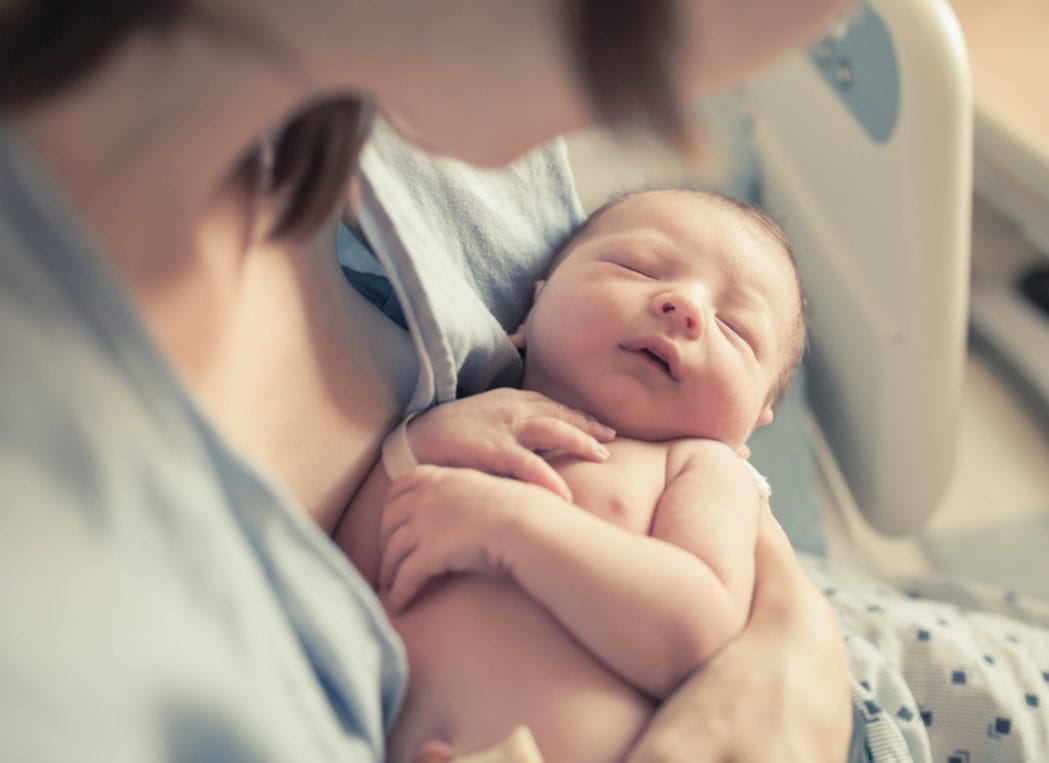One baby, 3 parents: A new kind of IVF

But it's not without some controversy.
If you ask most people, there are some immutable facts of life: The sun rises in the east and sets in the west. Winter leads to spring. And babies have two biological parents.
But as the BBC reports, fertility doctors in Greece and Spain they’ve used genetic material from three people to conquer a mother’s infertility.
The baby boy was born earlier this week to a 32-year-old mother who previously went through four unsuccessful cycles of IVF, before doctors who used an experimental form of IVF. They took genetic material out of the mother’s egg, placed it into a donor egg and used sperm from the intended father. The baby has a tiny amount of DNA from the donor woman, but most of his DNA comes from his parents.
The team behind this pregnancy hopes more infertile people will become parents by using this form of IVF, but some experts suggest it should be reserved for families affected by deadly mitochondrial diseases.
Tim Child, from the University of Oxford and the medical director of The Fertility Partnership, tells the BBC: “I’m concerned that there’s no proven need for the patient to have her genetic material removed from her eggs and transferred into the eggs of a donor.”
According to Child, the risks of this technique aren’t entirely known, and while parents may be accepting of unknown risks if they are trying to prevent mitochondrial diseases, more long-term study needs to be done before it should be used to increase the odds of a successful IVF cycle.
This case follows another recent story out of the Ukraine, where a fertility clinic in Ukraine raised controversy by claiming it has successfully made babies with DNA from three parents.
In 2018 a journalist from NPR was invited to see the process in action: Embryo scientists at the Nadiya Clinic in Kiev fertilize a hopeful mother’s egg with her partner’s sperm. They also fertilize a donor’s egg with the man’s sperm. The scientist then removes all of the DNA from the donor egg except for mitochondrial material and implants the DNA from the parents into the embryo—with the idea being the remaining mitochondrial material will enable the embryo to develop.
“These babies… they have DNA from mother and from father. So they are genetically related to their parents,” explains Pavlo Mazur, an embryo scientist with the clinic. “These children are more like their parents—not donor.”
Dr. Valery Zukin, director of the clinic, says he believes it is the only one in the world that regularly conducts the procedure. To date, four children have been born with genetic material from three parents, which is all the validation Zukin says he needs. “As a doctor I understand only one thing: We have parents who couldn’t have children and now they have their own biological child. That’s all.”
For some women who have struggled with fertility, this is a potentially groundbreaking option that enables them to feel a genetic connection with their child. Others say the procedure is a promising one for couples who hope to prevent passing along mitochondrial disorders.
“If it was a relatively mild disorder then, ethically one might question whether that would be viable,” mitochondrial scientist Dr. Mark Tarnopolsky from McMaster University in Canada tells CBC. “But certainly, the severe disease like MELAS syndrome, which causes strokes, seizures, renal dysfunction—some really devastating disorders in children and young adults, I think this is something that needs to be explored.”
But significant ethical questions remain. In the United States, attempts at the procedure were banned by the Food and Drug Administration after similar trials were performed by a New Jersey doctor in the 1990s.
“This is really an irresponsible kind of human experimentation,” says Marcy Darnovsky, who heads the Center for Genetics and Society, a U.S.-based watchdog group. Danovsky adds that even if the newborns appear to be healthy, it’s too soon to tell how the alterations to their genetic material could affect them or potential offspring of their own. “We just don’t know what’s going to happen to these children.”
Zukin dismisses those concerns, saying the families involved are well aware of the experimental nature of the procedure—and adds that progress tends to feel uncomfortable at first. “If you would like to swim, then, first of all, you must jump in the water.”
[A version of this post was originally published June 11, 2018. It has been updated.]


































